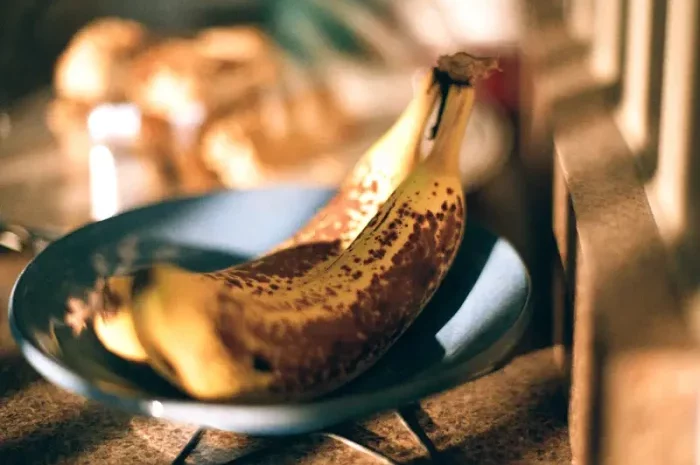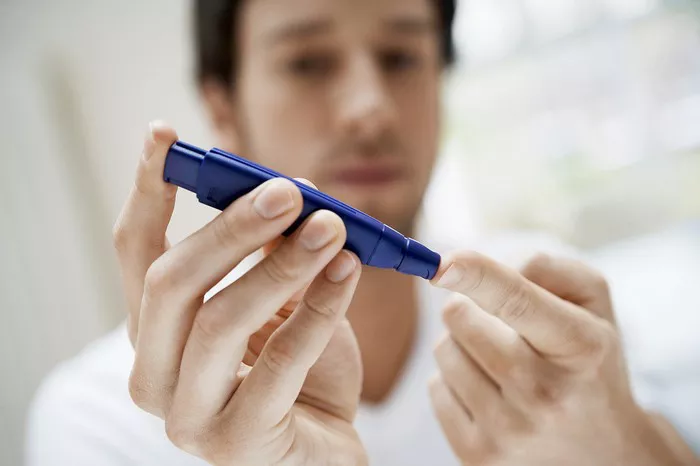Bananas are one of the most popular and widely consumed fruits around the world. Known for their sweetness, portability, and nutritional benefits, bananas are often seen as a staple snack for people of all ages. However, for individuals with diabetes, particularly those managing type 2 diabetes or insulin resistance, the question arises: “Are bananas good to eat if you have diabetes?” The simple answer isn’t always as straightforward as it may seem, and there are several factors to consider before adding this fruit to your diet.
In this article, we will explore the relationship between bananas and diabetes, examining how bananas affect blood sugar levels, their nutritional profile, and how they can be incorporated into a diabetes-friendly diet. By the end of this guide, you’ll have a clearer understanding of whether bananas can be part of your diabetes management plan and, if so, how to consume them safely.
Understanding Diabetes and Blood Sugar Control
Before diving into whether bananas are a suitable food choice for individuals with diabetes, it is essential to understand the core issue: blood sugar regulation.
Diabetes is a chronic condition characterized by elevated blood glucose (sugar) levels. There are two primary types of diabetes:
Type 1 Diabetes: An autoimmune condition in which the body’s immune system attacks and destroys the insulin-producing cells in the pancreas, leading to little or no insulin production.
Type 2 Diabetes: A metabolic disorder where the body either doesn’t produce enough insulin or becomes resistant to the effects of insulin, leading to elevated blood sugar levels over time.
For both types of diabetes, the goal is to manage blood sugar levels and prevent spikes that can lead to complications such as cardiovascular disease, nerve damage, kidney failure, and more. This is typically achieved through a combination of medication, lifestyle changes, and dietary adjustments.
Carbohydrates, which include sugars, starches, and fiber, play a significant role in blood sugar regulation. When you eat carbohydrates, your body breaks them down into glucose, which enters the bloodstream. Insulin then helps move this glucose into cells for energy or storage. However, for people with diabetes, this process is often disrupted, making it essential to monitor carbohydrate intake and choose foods that have a more gradual effect on blood sugar levels.
The Nutritional Profile of Bananas
Bananas are rich in several essential nutrients, including vitamins, minerals, and fiber, which contribute to their health benefits. Here’s a breakdown of the key nutrients found in a medium-sized banana (approximately 7–8 inches long or 118 grams):
Calories: 105
Carbohydrates: 27 grams
Sugars: 14 grams
Dietary Fiber: 3 grams
Protein: 1.3 grams
Fat: 0.3 grams
Potassium: 422 milligrams (12% of the recommended daily value)
Vitamin C: 10% of the recommended daily value
Vitamin B6: 20% of the recommended daily value
Magnesium: 8% of the recommended daily value
Bananas are particularly known for their high potassium content, which helps support heart health, regulate blood pressure, and maintain proper muscle and nerve function. They are also a good source of vitamin B6, which plays a role in metabolism and brain health, and vitamin C, which is essential for immune function and collagen production.
How Do Bananas Affect Blood Sugar Levels?
One of the main concerns when it comes to eating fruit for individuals with diabetes is how it will impact blood sugar levels. The key factor in this consideration is the glycemic index (GI), a ranking system that measures how quickly a carbohydrate-containing food raises blood glucose levels.
The glycemic index ranges from 0 to 100, with foods that have a higher GI causing rapid spikes in blood sugar, while foods with a lower GI have a more gradual impact. Here’s how bananas stack up:
Glycemic Index of Bananas: A medium banana has a GI of approximately 51, which is considered moderate. For comparison:
Low-GI foods have a GI of 55 or less.
High-GI foods have a GI of 70 or more.
Foods with a moderate GI, like bananas, tend to raise blood sugar levels at a slower rate than high-GI foods. However, it’s still important to remember that the GI of a banana can vary depending on its ripeness.
Unripe (green) bananas have a lower GI because they contain more resistant starch, a type of carbohydrate that is not fully digested and absorbed by the body. This means that green bananas may have a less dramatic impact on blood sugar.
Ripe (yellow) bananas have a higher GI because the starches in the fruit have broken down into sugars, making them easier for the body to digest and absorb. As a result, ripe bananas can cause a faster rise in blood sugar levels.
Therefore, while bananas have a moderate GI, the ripeness of the banana can influence how quickly the glucose enters the bloodstream. For individuals with diabetes, this is an important factor to consider when choosing whether or not to consume a banana.
The Role of Fiber in Bananas
Bananas are a good source of fiber, containing about 3 grams of fiber in a medium-sized fruit. Fiber is an essential nutrient that can have several benefits for people with diabetes:
Blood Sugar Control: Fiber, particularly soluble fiber, can slow the absorption of glucose into the bloodstream, preventing rapid spikes in blood sugar levels. The fiber in bananas, especially the soluble fiber known as pectin, can help with this gradual release of glucose.
Digestive Health: Fiber promotes healthy digestion by supporting regular bowel movements and feeding beneficial gut bacteria. This can help prevent constipation and contribute to overall gut health.
Satiety: Fiber adds bulk to the diet, helping you feel fuller for longer. This can help prevent overeating and reduce overall calorie intake, which is especially important for individuals managing type 2 diabetes and aiming to maintain a healthy weight.
Because of their fiber content, bananas are a relatively good choice for people with diabetes compared to other high-sugar foods like candy or pastries. However, it’s essential to balance your intake of bananas with other lower-carb, high-fiber foods to prevent excess carbohydrate consumption.
Can Bananas Be Part of a Diabetic Diet?
Bananas can be included in a diabetic diet, but like all fruits, they should be consumed in moderation. If you have diabetes, it’s important to manage your carbohydrate intake throughout the day, and this includes the carbohydrates from fruit.
Here are a few things to consider when including bananas in your diet:
1. Portion Control
A medium-sized banana contains about 27 grams of carbohydrates. While this is not excessive, it’s important to monitor the portion size to avoid exceeding your carbohydrate goals. A good strategy is to stick to one small to medium banana per serving, especially if you’re also consuming other sources of carbohydrates throughout the day.
2. Pairing with Protein or Healthy Fats
To minimize blood sugar spikes, it’s helpful to pair your banana with a source of protein or healthy fats. For example, you could pair a banana with a handful of nuts, a serving of Greek yogurt, or a tablespoon of peanut butter. This will help balance the meal by slowing down the absorption of glucose and keeping your blood sugar levels stable.
3. Choosing Less Ripe Bananas
As mentioned earlier, unripe or green bananas have a lower GI than ripe ones. If you’re particularly concerned about blood sugar levels, you may want to opt for slightly less ripe bananas or even consider incorporating green banana flour into your diet, which is made from unripe bananas and has a much lower glycemic impact.
4. Monitor Your Blood Sugar
If you’re uncertain about how bananas affect your blood sugar levels, it’s a good idea to monitor your glucose after consuming one. This will help you understand how your body responds to the fruit and whether or not it causes significant blood sugar spikes.
Other Fruits to Consider for a Diabetic Diet
Bananas are not the only fruit to consider when managing diabetes. Several other fruits have a low or moderate GI and can be a part of a healthy, balanced diabetic diet. These include:
Berries (strawberries, blueberries, raspberries): These fruits are low in carbohydrates and packed with antioxidants, fiber, and vitamin C.
Apples: Apples are a great source of fiber and vitamin C, and they have a moderate GI.
Pears: Pears are rich in fiber, vitamin C, and antioxidants and have a moderate GI.
Cherries: Cherries have a low GI and are a good source of vitamins and antioxidants.
Kiwi: Kiwi is another fruit that has a low GI and is high in vitamin C and fiber.
Conclusion: Are Bananas Safe for People with Diabetes?
In conclusion, bananas can be safely included in a diabetic diet, but moderation is key. While they are a good source of essential nutrients, including fiber, potassium, and vitamins, they can still cause blood sugar fluctuations, especially if consumed in large quantities or when very ripe.
For people with diabetes, it’s essential to manage portion sizes, pair bananas with protein or healthy fats, and be mindful of the ripeness of the fruit. By following these strategies and monitoring blood sugar levels, bananas can be enjoyed as part of a healthy, balanced diet.
As always, it’s important to consult with your healthcare provider or a registered dietitian to tailor your diet to your specific needs and goals. They can provide personalized advice on managing your blood sugar levels while still enjoying the foods you love.
Related topics:
How to Lose Weight on a Diabetic Diet


























